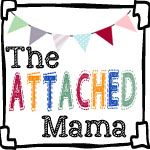It was a cold day in February when the Memoria
Press cataloged arrived in my mailbox. As many homeschoolers and teachers can attest,
February can be a rough month for teaching! I was suffering from a bad case of the “winter blahs”.
So, I have to admit that I felt quite enamored
when I first laid eyes on the Memoria Press catalog. It was packed with full-color pictures of their elegantly
laid out curriculum. Their
curriculum is so well designed that it makes giving your children
an academically rigorous, classical education seem feasible! Their curriculum was a ray of hope for
me in this cold month of February.
On
the cover of this catalog was a headline that really caught my attention. “Why Latin Is Not An
Option.” Hmmmm….Latin.
Memoria Press is known for
their quality Latin curriculum.
So, after researching my options I decided to give their introductory
Latin course, Prima Latina, a try.
Why
Latin?
If you had talked to me four year ago, I would
have considered teaching Latin a waste of time. I mean, it is a ‘dead language’, right? Wouldn't time be better spent learning something else...anything else?
Suffice it to say that I have changed my tune
when it comes to learning Latin.
I really feel that Latin is important and worthwhile. There is a reason why Latin has been at the cornerstone of education in western civilization for so many years. It is REALLY a power-packed subject!
Overview of Prima Latina
The course is divided into 25 lessons, and each lesson takes about a
week to complete. I found
that this gives the perfect amount of material to cover in a standard school
year. Parent-teachers will
have time to schedule review or take things slowly if they need to. You will not feel rushed trying
to complete this course!
This
course is a VERY thorough introduction of the Latin language. In fact, much more thorough than
other introductory Latin courses I researched. The
course objectives and student goals are written clearly in the beginning of the
book. Students will learn to
read, pronounce, and spell 125 Latin words. They will learn 25 practical Latin expressions and 4 prayers
in full. (I thought the prayers
were ESPECIALLY cool. I was sort
of “geeking out” over these.)
Students also will expand their vocabulary by studying derivatives,
learn the proper names of constellations, and expand their grammar
knowledge.
The
course comes with a number of components and optional supplements. These can be purchased individually or
in a package from MemoriaPress.com.
For
this review, I was used:
The
Prima Latina Student Book (Required)
The
Prima Latina Teacher Manual (Required)
The
Prima Latina Instructional DVDs (Optional,
but highly recommended by me!)
The
Prima Latina CD set (Optional. Nice
to have, but not essential if you have the DVDs.)
The
Prima Latina Copybook in New American Cursive (Optional, but highly recommended by me.)
The
Latina Christianna I Flashcards (Optional)
The
Prima Latina Lesson Plans (Optional.
Personally, I didn’t use this.)
Pronunciation:
If
you are new to Latin, you will soon learn that there are two main ways to
pronounce Latin: Classical and
Ecclesiastial.
Memoria
Press uses only the Ecclesiastical pronunciation (sometimes referred to as “Church Latin”.) This is the style of Latin used by the Roman Rite of the Catholic Church. I personally prefer this pronunciation.
Prerequisites:
As
I mentioned before, the recommended age range for Prima Latina is 2nd-4th
grade.
Reading
fluency will happen at different ages for different children. For this reason, we decided to
hold off on Latin instruction until my oldest son was almost 9 years old. (He will be starting the 3rd
grade.) However, my daughter is a
bit advanced with language skills and seemed ready to start much earlier in the
2nd grade. Once
your children can read a chapter book with little struggle and copy several
sentences with ease, I would say they are ready to start. Young children may have to divide the
lessons into smaller segments.
Having
some type of foundation in grammar was helpful, but not necessary. By the time we started Latin, my kids
had already completed First Language Lessons 1-2. So, they were already familiar with the basic parts of
speech. Grammar is
thoroughly taught in Memoria Press Latina, but I found having this knowledge base was
helpful. It allowed the kids to
concentrate on learning the latin.
But I don’t speak Latin! How can I teach it?
My
answer to this is: “Docedo
discitur.” Or “One learns by
teaching.”
I am taking this
year as an opportunity to learn Latin along with my children, and I think this is the BEST
way to complete the course. Modeling a love for learning new things is one of the biggest advantages for homeschooling. I like to teach my children that learning something new should never end.
Prima
Latina is designed for the parent-teacher who has no previous knowledge of
Latin. The instructional DVDs were
VERY helpful in giving me the confidence I needed to teach the course. They are an optional component of
the curriculum, but I wouldn’t want to use Prima Latina without them!
Leigh
Lowe, a writer and curriculum developer for Memoria Press, teaches the courses
on the DVD. She has a very
slight and charming southern accent, and her teaching style is both
entertaining and effective.
But
heed my WARNING: Do not
expect to plug in these DVDs and have your children complete the student
workbook independently. Prima
Latina is not designed to be an independent study in Latin! Parent involvement and instruction is
still expected. So be
prepared to learn along with your children.
I have a dear friend who made the mistake of attempting to let her students learn Latin independently. Things went well until they were about 18 weeks into the course. Suddenly her child needed help completing a translations, but she was unable to help because she hadn't been sitting in on the Latin lessons. She warned me not to make the same mistake, and to learn the language with my children. I think this is good advice.
Our Weekly Routine:
Prima
Latina comes with a Lesson Plan book that guides parent-teachers with using all
of the components of the program.
However, I found myself modifying their plan quite a bit.
I
think it is important when learning a new language to practice it as often as
possible. For this reason, I
tried to allow about 10-30 minutes per day to study Latin. Additionally, I tried to make
sure that I gave the kids an opportunity to practice the “Four Arts of
Language” everyday while learning Latin. The “Four Arts of Language” include: 1) Listening, 2) Speaking, 3) Reading,
and 4) Writing.***
Day
1: New Material and Copybook
(25-35 minutes)
1) We would watch the DVD lesson together and follow
along in the student book. (Reading Latin, Listening to Latin, Speaking
Latin) (20 minutes)
The Attached Mama's Tips: Parents should go through the lesson
with their child so they can learn the material too. Also, be
prepared to pause the DVD as needed.
Require children to repeat the vocabulary, phrases, or prayers when
prompted so they practice speaking Latin. My children had a tendency to sort of passively watch these lessons, so I needed to remind them to interact with the instructor from time to time.
2) Next I would have them complete the Prima Latina Copybook lesson independently. I would check this when they were finished.
(Writing Latin) (10-15 minutes depending on how much I could get my child to focus!)
 |
| Prima Latina Copybook in "New American Cursive" |
Day
2: Review and
Workbook (20-30 minutes)
1) I would review the vocabulary, derivatives,
and prayer using book, white board, and CD (Reading Latin, Listening to Latin, Speaking
Latin). (10 minutes)
The Attached Mama's Tip:
The CD pronounces words for those who don’t feel comfortable. However, I found I could usually
remember how to say the words if I had practiced the day before. This helped me save time. I didn't have to worry about dragging out the CD player and finding the right track.
 |
| Prima Latina Student Book- Students can read along with me as I review vocabulary on the board |
2) The kids would then complete the first page in their workbook. (Reading Latin, Listening to Latin, Speaking
Latin, Writing Latin) (10-20 minutes)
The Attached Mama's Tip:
Some of these questions can be done orally if you are working
with a child who is very young or doesn’t like to write. I would suggest having the child write the Latin phrases and words though. This helps them remember how to spell these words.
 |
| Prima Latina Student Book-I would typically have them do half of the exercises on the second day. |
Day
3: Review and Workbook (20-30 minutes)
1) I review vocabulary, derivatives, and prayer
using book, white board, flashcards, and CD (Reading Latin, Listening to Latin, Speaking
Latin) (10 minutes)
2) The kids would then complete the second page in their workbook. (Reading Latin, Listening to Latin, Speaking
Latin, Writing Latin) (10-20 minutes)
Day
4: Quick Review (10 minutes)
1) I would review vocabulary, derivatives, and prayer
using book, white board, and CD (Reading Latin, Listening to Latin, Speaking
Latin) (10 minutes)
Day
5:
1) I review vocabulary, derivatives, and prayer using book, white board, and CD (Reading Latin, Listening to Latin, Speaking
Latin) (10 minutes)
2)
I would dictate 10 English translations and the kids would attempt to
spell the Latin word on a white board. I would always do the 5 new
review words and pick 5 words from previous lessons. (Writing Latin) (10-15 minutes)
--OR--
I would have the kids take one of the online "Quizlet.com" tests to review.
The Attached Mama's Tip: You
can use the optional flashcards to review vocabulary too. But I would
typically flip back to previous lessons in my teacher guide and randomly
pick 5 words to review. Any word they could spell correctly, I would
put a check next to it. This helped me keep track of how many times I
had reviewed the word. Any word they misspelled, I would put an "x"
next to it. This told me I needed to keep practicing the word. Using the workbook was easier for me than handling the flashcards personally. I may start using the flashcards in the higher levels of Memoria Press Latin so I can review from multiple levels.
**The
“Four Arts of Language” is a term I first heard Andrew Pudewa use in his talk
“Nurturing Competent Communicators.” Listening and Speaking are the verbal components of
language. Reading and writing are
the written components of language.
Listening and reading are the two main ways we input language, and
writing and speaking are how we typically output language. We need practice in all four components
when learning a language.
Final Thoughts:
I was surprised by how much I liked Prima Latina. It is a quality, no-nonsense program that is easy to teach and learn from.
Disclaimer: I received a free copy of this product in exchange for my honest review. I was not required to write an honest review, and I was not compensated in any other way. All of the opinions expressed in this blog post are my own.























3 comments:
Thanks for sharing this! I have chosen to go the memoria press route. My oldest will be in K next year and it's nice to see confirmation to my choice. I also plan on adding some ambleside online readings in the future : ) Has anyone else done this?
I think the book picks from Ambleside are lovely! I think you are going to have a great year!
Thanks for the review! Your post has perfect timing. I am considering Prima Latina for DD next year. Now I have a little better idea of what to expect and what to buy.
Post a Comment